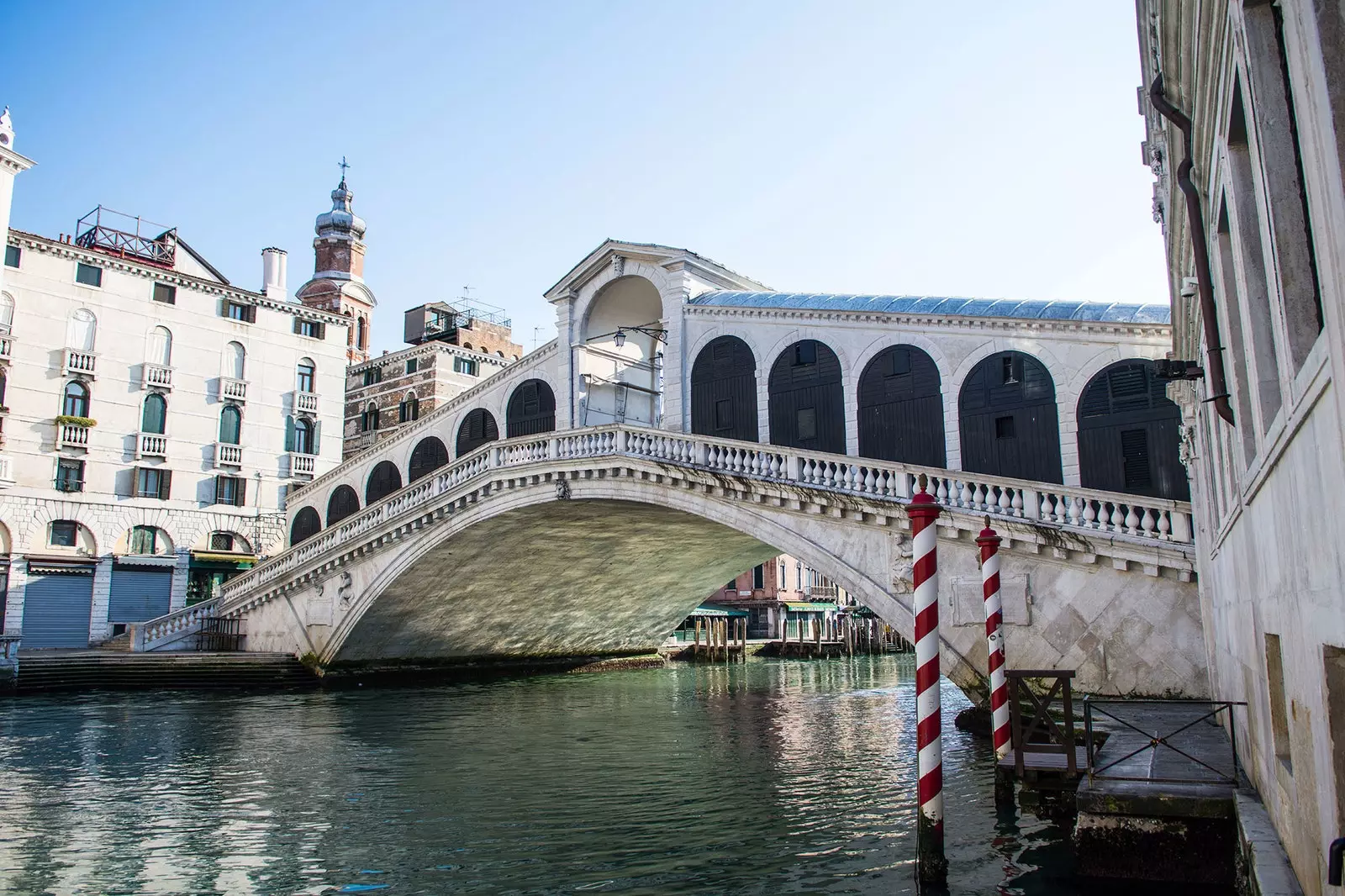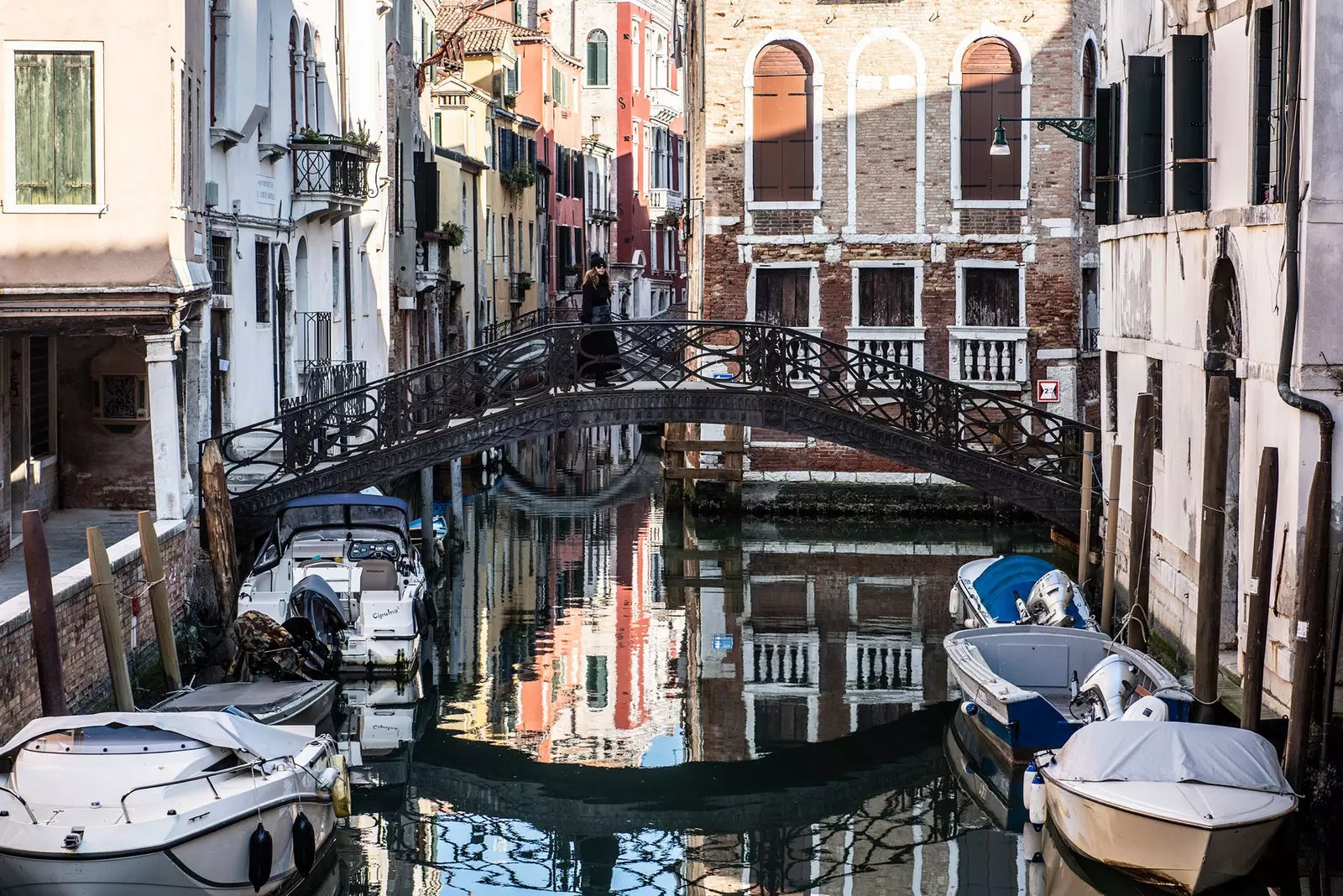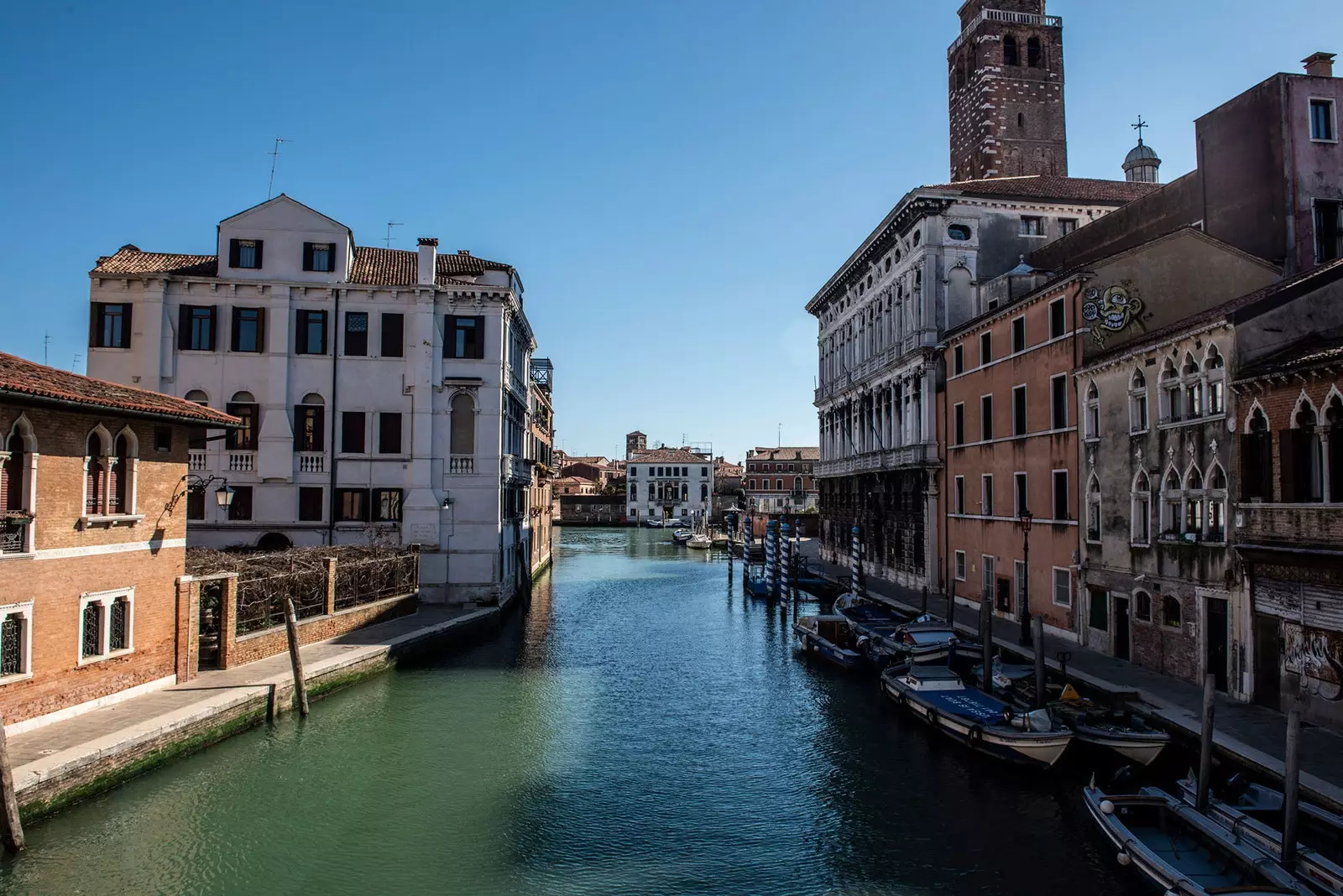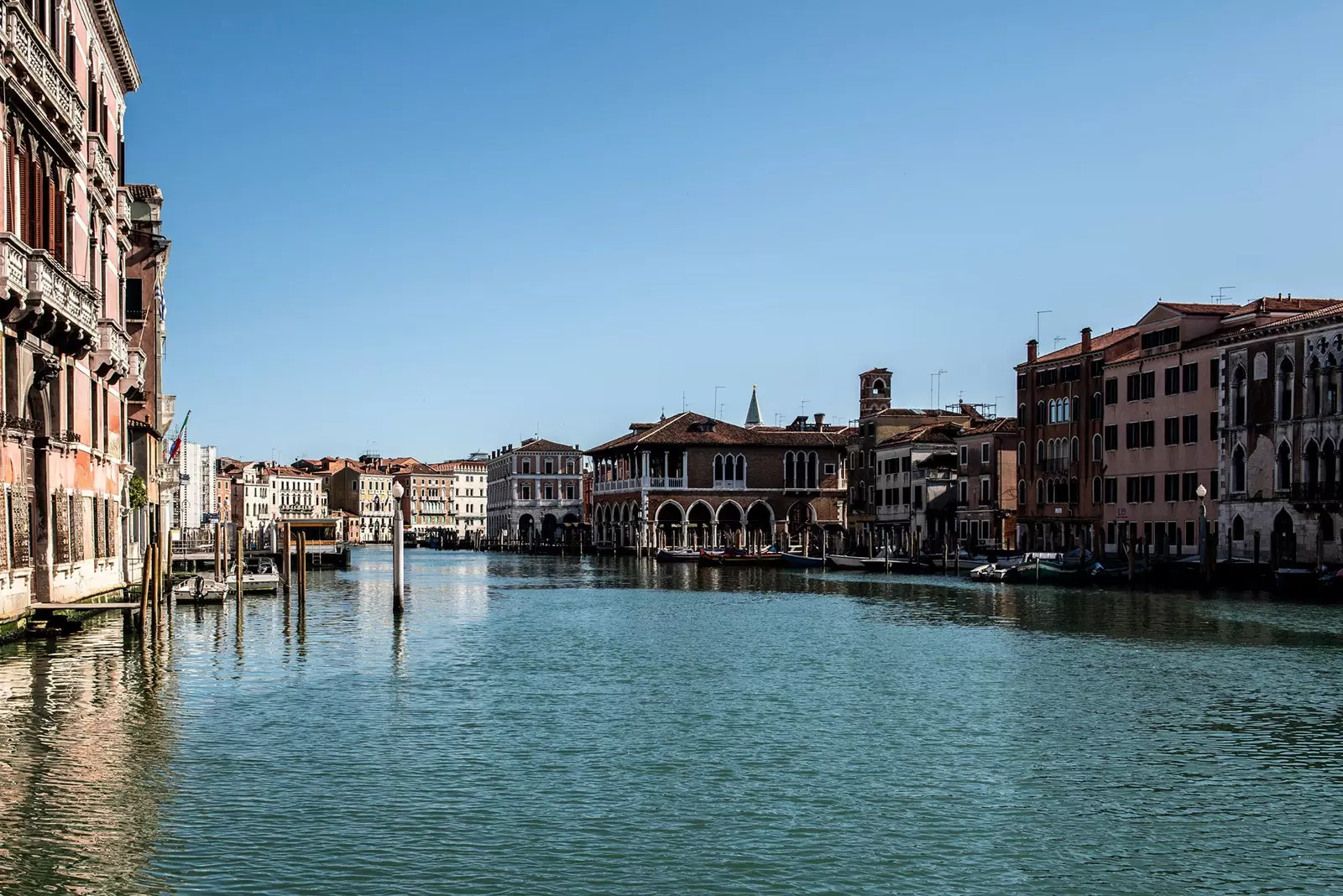
Swans and dolphins in the canals of Venice? Not quite
There is false news that, no matter how hopeful and aspirational whatever your message They don't stop being what they are fake news . And we must fight them so that they disappear no matter how beautiful the propagated lie is.
And there is something of allegorical in all this racket of the phenomenon of the fake news . "Stay in the corner until you stop thinking about a white bear," Tolstoy's brother told the famous Russian writer when he was a child. So it was how Tolstoy froze in the thinking corner fighting your mind that he couldn't stop visualizing the damn polar bear . Years later, psychologists named this curious phenomenon “bimodal ironic mind control mechanism” . It happened to a young Tolstoy, but it is something that would happen to any mortal.
There is something of that in the dreaded spread of fake news in the age of digital information ai. “Don't think about swans and dolphins in Venice , don't think about swans and dolphins in Venice, don't think about cis…”, too late. Given the general tedium, you have already hit the share button almost without thinking, falling into the trap on all fours.

This is how the silence of tourists lives the residents of Venice
When one is given collective crisis of such magnitude as the current one, it is natural to wish that the news that fills us with hope is real . May they be fulfilled almost by divine justice. Maybe that's why we take as true some extraordinary events without even checking if the messenger is spreading a gross lie.
in full extended confinement , and with many dead hours ahead, the images of swans and dolphins sailing the crystal clear waters of the canals of Venice They have flooded social networks. It was a bucolic picture. The reconquest of marine fauna in the face of man's footprint , that stains everything and that disturbs everything. "Nature is sending us a message to let the planet breathe," said many sharing the news. Facebook groups, such as the so-called “Clean Venice”, reference tourism media, animal associations and even Hollywood actresses they published posts on their social networks giving credibility to the reconquest of wild nature. Finally, positive news emerged in the face of the trickle of deaths and infections.
Unfortunately, and despite the more than laudable background, the fake news virus was already successfully inoculated . Even among the Venetians themselves wanting to hear something positive. Since someone had to put an end to it, he had to killjoy an article in the newspaper The Republic: “Several users have shared photos of dolphins and swans in the deserted canals of Venice . (...) What holds this type of publication together is a supposed revenge of nature while humans are locked up at home. But swans in Venice are not new, especially in burano ; Y the dolphin photos had been taken in Sardinia”.
The truth is that there are no long-necked swans in Venice. And much less dolphin s jumping in the absence of tourists, gondolas or gondola tourists. Neither are there nor are they expected. The swans are still where they were before the COVID-19 epidemic, on the island of Burano , located seven kilometers from Venice. And it is true that dolphins are sighted in many areas of the Mediterranean Sea, but the closest they have come to Venice is Sardinia, which is more than 700 kilometers away.
In case any other ingredient is missing from the equation, it has also been ensured that the water in the canals of Venice is now crystal clear due to the reduction in human activity and the lack of boats with tourists that put the future of the magical city at risk (we analyzed this fragile future in this Traveler article. Well, as the experts interviewed by abcnews , it is true that the water is clearer, but it is not a phenomenon that necessarily implies the circulation of the cleanest water . Simply now no boat moves the fragile sediments to the surface as usual.
“This is an unexpected side effect of the pandemic” , says one of the tweets with the most impact on the network. “The water flowing through the canals of Venice is clear for the first time. The fish are visible, the swans returned”.
Nothing better than a reality bath from a local. Matilda Lucia Bovo , runs with her family the Gatton restaurant , and answers the false news without a hint of doubt: “Hello! You actually posted a picture of my hometown Burano, the swans live in the lagoon and have been there for over 20 years. They have never left, people feed them in the spring so they roam the pond. You can also see the fish from the less muddy parts of the canals! Of course they are dirty, but this is not due to quarantine. Please don't spread fake news."
WHY DO WE LIKE TO BELIEVE THAT THERE ARE DOLPHINS AND SWANS IN VENICE?
The " lockdown romance " (if there is such a thing) has let the imagination fly in the most aspirational field that remains to us in a moment of forced confinement. Nature and ecology in all its forms are plots where you can let the imagination fly before the “arrest” of the confinement.
The doctor explains it really well. susan david , a psychologist at Harvard Medical School in a TED talk that she gave yesterday in open:
According to the scientific literature consulted, these days it's easy to fall into a strange paradox . The paradox of empty happiness , which consists of searching hard for happiness at all hours. We seek answers to questions that we do not know how to answer, and this causes us even more anxiety. As a result, the endless search for happiness elsewhere that do not depend on us inevitably makes us unhappier beings”.

Neither dolphins nor swans in Venice
In a similar line moves the sociologist Liliana Arroyo , expert in social impact on social networks and author of the essay You are not your selfie. 9 digital secrets that everyone lives and nobody tells (Millennium Publisher). “We do not question whether this news is true. This is due to confirmation bias. . When something fits with an idea that we have or would like to have we don't question it . Certainly these days confirmation bias makes us think of a response from nature . And if the news is accompanied by a photograph, we believe it even more without thinking that digital images can be easily doctored. As it feeds the fantasy of the miracle of nature that runs through our imagination, we do not question a possible alternative explanation.
This confirmation bias finds the perfect hideout in certain compensation mechanisms that we experience these days. “ we need symbols that make us believe that this confinement is also bringing good things. something like a compensation mechanism that make us think much more about what is out there . And it must be emphasized that in social networks everything that has to do with animals is a guaranteed success. In fact, the most viral posts always have puppies or kittens. Namely, a couple of phenomena come together for this type of fake news to consolidate among us”.
Definitely, spreading hopeful news in times of crisis is very common , but at the end of the road does not bring greater happiness . For this reason, and due to the barrage of fake news In the net, News Literacy Project has inaugurated a special coronavirus where they publish a quick 7-step guide to try to detect those false news that it would be better not to share with friends and family.
1. Be aware of your emotions.
two. Pause.
3.Decide if it is… check the comments : Has anyone provided evidence that the claim being made is untrue or true?
Four. take 60 seconds to find out if it's… user-generated content, an organization, an unfamiliar source, or a recognized source.
5. One more minute to… investigate the source.
6.Develop smart habits, verify published data to seek transparency.
7. Trust your experience: learn digital verification skills to help protect others.

There are no swans or dolphins in Venice. Yes in Burano (7 km) and Sardinia (700 km)
